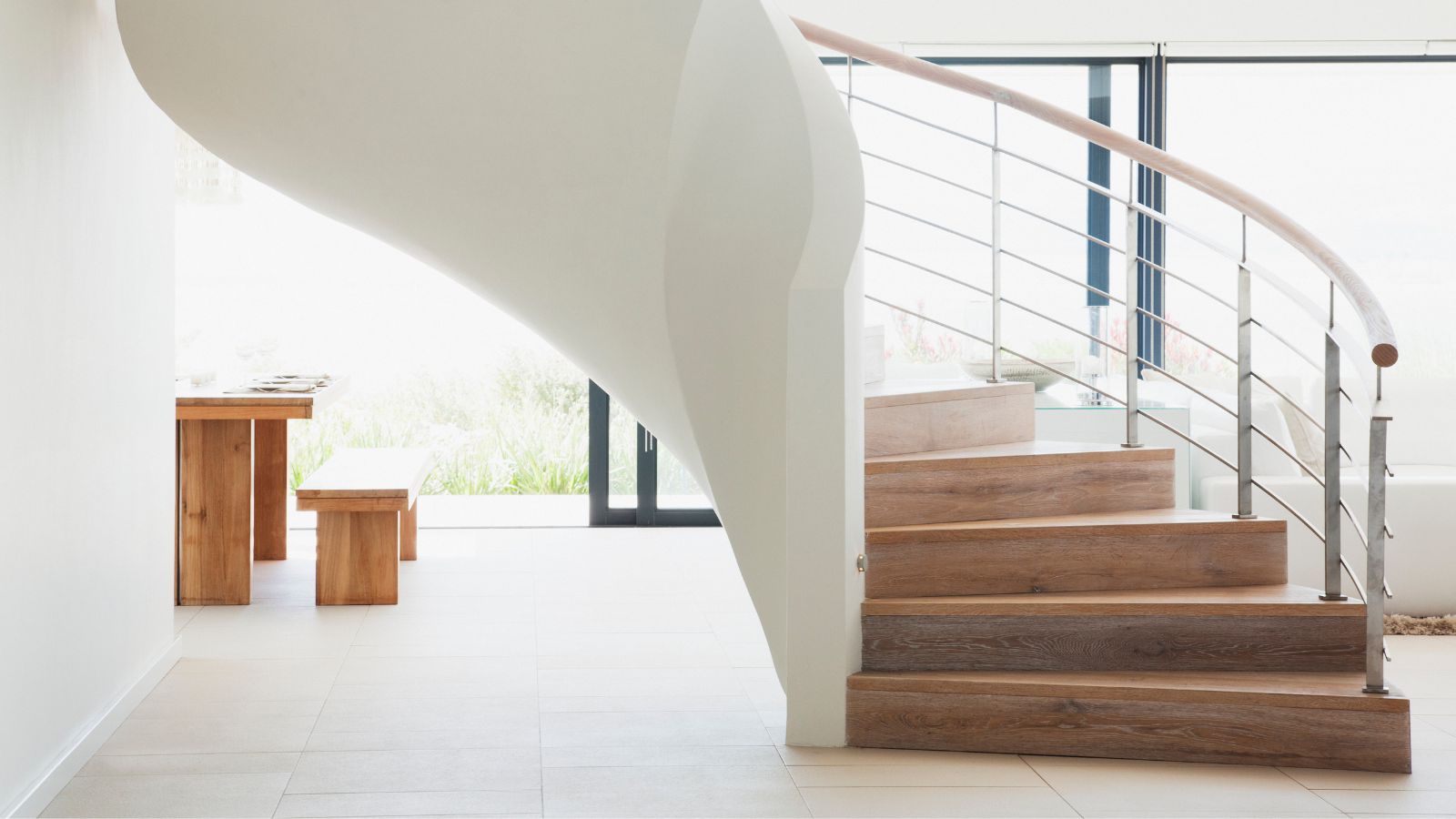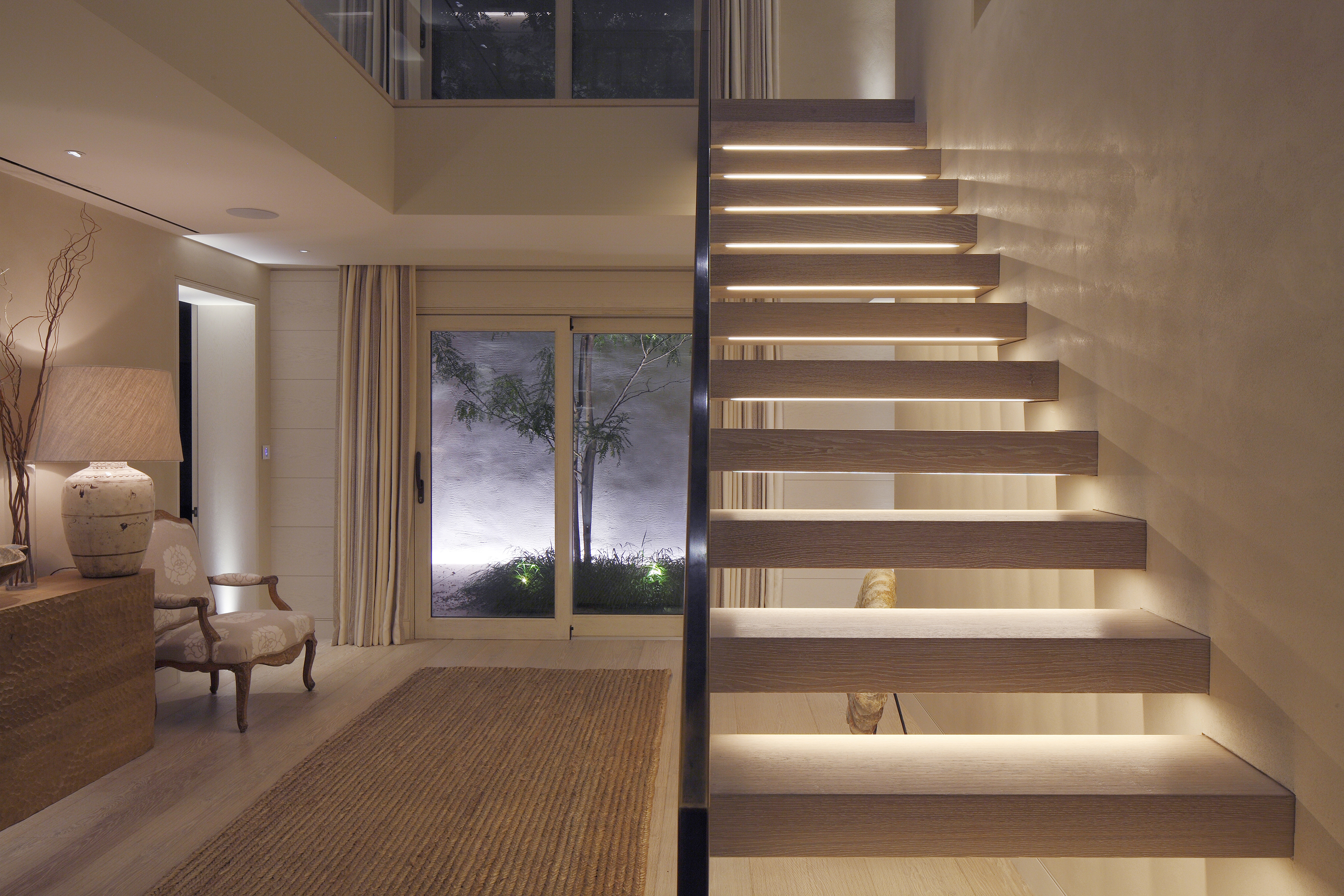How to light up stairs – a step-by-step guide from a lighting expert
Lighting experts reveal their bright ideas for lighting up staircases


Lighting is often the last thing we consider when designing our staircases. Given that it is a passing point, we are usually more focused on creating a pretty but purely functional walkway that we can pass through safely.
However, staircase lighting can make or break the space. Not only does it determine how practical your stairs are, but it can make an otherwise very bland area of the home far more interesting – highlighting architectural features and improving accessibility in your home.
We chatted with a lighting expert to learn more about how to light up stairs – this is their step-by-step guide to fitting a safe but stylish scheme.
How to light up stairs
Given the fixed nature of our staircase ideas, lighting is one of the best ways to add a little intrigue and update the space without having to knock the staircase out and replace it altogether. But what is the best way to light a staircase?

While some ceiling lights above will certainly work, Piero De Marchis, lighting expert and Director of Detail Lighting, suggests lowering some of your lighting ideas to floor level, creating layered and functional highlights on each step:
‘Floor lighting can be used for orientation purposes – indicating steps and changes of floor surface for example. For this purpose, the floor lights should be kept to the edge as much as possible and be low brightness to reduce glare.’
Lowering the lighting also means you can avoid changing a light bulb above the stairs – so there is no need for dangerous balancing acrobatics.
Design expertise in your inbox – from inspiring decorating ideas and beautiful celebrity homes to practical gardening advice and shopping round-ups.

When adding in staircase lighting, you need to position each bulb carefully to mitigate glare (specifically on hard stairs) so that you can still see the surface of the step and ascend carefully, Piero continues.
‘Stair lights should be positioned 200mm – 300mm above the tread, and you should avoid mounting it in the skirting,’ he continues. This will help to cast a cozy glow over the surface of the step. ‘If you are working with a contemporary ‘floating’ staircase, then carefully routed LED linear lighting positioned under the treads can be installed, either on a string or perhaps as a handrail detail as an alternative option,’ Piero adds.
‘In any scenario, you should be guided by the style of the stairs and your thoughts about glare. Lighting every second or third step is a traditional feature and a common application of stair lighting.
FAQs
What color lighting is best for stairs?
While any lighting color works well on stairs, Piero De Marchis, lighting expert and director of Detail Lighting, suggests opting for warm lighting temperatures for a more welcoming glow. ‘Humans look better in warm color lighting,’ he says. ‘Opting for 4000K will help to emphasize the crispness of the architecture.’
Are stair lights worth it?
Stair lights can be tricky to install on an existing staircase, but they are often more than worth the hassle. Not only are they often energy efficient, but they can instantly upgrade the look of any staircase, helping to make your home look more welcoming while increasing safety and practicality.
Just because you are lighting the stairs at floor level does not mean you should neglect your usual hallway lighting – a combination of both is essential for layering in interior design and safety. Installing regular ceiling lights (using motion sensor light bulbs can be practical when you need to go up and down with your hands full) and using lamps in hallways and entryways will make a home feel welcoming while simultaneously ensuring your stairs are easy to navigate for both young and old.

Chiana has been at Homes & Gardens for two years and is our resident 'queen' of non-toxic living. She spends most of her time producing content for the Solved section of the website, helping readers get the most out of their homes through clever decluttering, cleaning, and tidying tips. She was named one of Fixr's top home improvement journalists in 2024.
